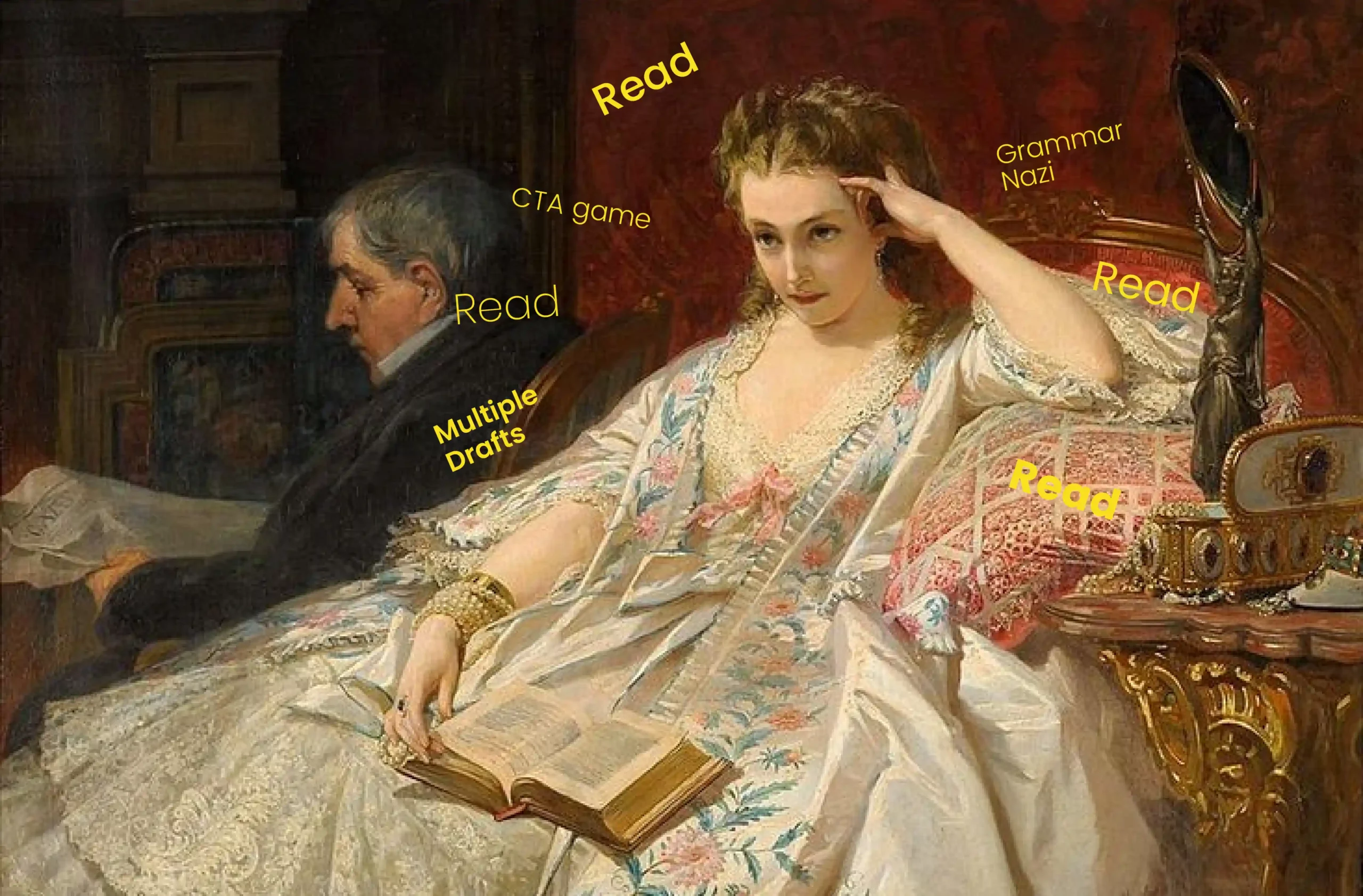What is Copywriting, and How to get started as a beginner?

“Consumers do not buy products. They buy product benefits.” David Ogilvy
And who, would you wonder, is responsible for conveniently and clearly conveying these product benefits to an audience pool of interest?
That’s right! It’s a Copywriter.
A copywriter holds innate power, for in the words whirled by them lie the probable success and prosperity of every product and service that wishes to become a ‘first choice’ for their target audience within a targeted niche.
Let’s first start by understanding,
What is Copywriting and what does it entail?
Wikipedia defines copywriting as, “…the act or occupation of writing text for the purpose of advertising or other forms of marketing.”
Too complicated to understand? Don’t worry; I’m here to make it simple for you!
Copy is essentially a piece of text. This text can vary in size (word count, characters used, etc.), and tonality (professional, semi-formal, friendly, etc.)
Copy is written primarily for the purpose of advertising or marketing a particular product or service. The ‘copy’ grabs a reader’s attention and hooks them onto the specialty of a product or service. The ‘copy’ also entices the audience to purchase the product, use the service, or further keep promoting the product/service to like-minded people through various means.
Copy, hence, is an integral part of the advertising and marketing avenues; and businesses are always on the lookout for talented and proficient individuals who can write copies that sell.
The best copies are those that hit the brand’s need right on the head, give the audience value in words, and most importantly, drive product and service sales.
Copywriting doesn’t require special degrees or a decade of work experience. If you can provide the brand and the audience with value in your words, then you can be a copywriter!
Which copies sell the best?
Websites, print ads, digital ads, catalogues, copies are needed everywhere.
A copy that mesmerizes the audience and improves sales is the copy that businesses are looking for. As complex as it sounds, copywriting will not make you pull your hair out in frustration. On the contrary, the key to writing compelling copies is something that I like to call “The C guide”
What is the C guide you may ask? I’m here to share just that with you!
Clear
Every copy you write ought to be clear. Any room for ambiguity can cost the brand and business a lot of unnecessary hassle. A clear and straight-to-the-point copy delivers an impact while also being easily comprehensible – a mix that the audience would appreciate best. This, however, is not to say that you cannot explore with many vocabulary choices while you design a copy. The aim is to appeal to the audience and incentivize them to take action over the product or service.
Concise
“Oh don’t use big words, they mean so little” says Oscar Wilde, and we can rightfully relate to this within the marketing and advertising industry. Complex words that do the bare minimum in adding value to a product make for a weak and unyielding copy. Fewer words that deliver a lasting impression are what a successful copy is all about. The aim is a concise copy written in a way that doesn’t take up too much of the audience’s time and effort while reading but creates a good recall about the product or service in the audience.

Creative
Now that we’ve covered grounds with the first two magic Cs, the last C you need to care about while copywriting is to get creative! When you have a limited number of words or characters to play around with, sticking to old-school boring sentence-style copies won’t catch your target audience’s attention. Use idioms, phrases, and maybe even colloquial terms to make your copy sound unique and inviting. All that grammar you’ve learned through the years, now is the time to put it to use!
Now that you have discovered the secret to creating copies that sell, it’s time to put it into action in a way that drives results for yourself as well as the brand.
Here are some tips to help you start your journey towards writing crisp and result-oriented copies as a beginner!
Research:
Let your phase of reading through copy ideas and researching your niche be longer than the time you actually write the copies. The more you explore, the more creative you’ll be able to get with your copies.
Keep a dumb list:
Came across a copy that caught your attention? Add it to your dump list as a reference. It doesn’t have to be anything extravagant, just jot stuff down in a notebook that you keep with you at all times or use the notes app on your phone!
Read a lot:
Reading is a habit that isn’t only entertaining but also is great for cognitive efficiency when it comes to aspects like memory and retention. It is hence a great way to learn new vocabulary faster and retain it better so that you can employ the use of different words whenever required and make your copies sound creative and well-versed.
Make multiple drafts:
A good rule of thumb to go by is to always write two or more varying drafts for every copy brief you receive. This will not only allow you to explore diverse ways in which you can structure your copies but will also leave you with multiple options you can present to your client if the requirements call for it.
Have a strong CTA game:
A strong and attention-grabbing ‘call to action’ is what makes every advertisement drive results and sales. Write straightforward and irresistible CTAs that compel the audience to take a desired action through the advertisement.
Keep copies grammatically sound:
Once familiar with the brand, people judge your products and services right from the get-go. A copy that is erroneous in its grammar – no matter how clear, creative, and concise – will leave a lasting unpleasant experience in the mind of the reader and will drive them away from the willingness to explore your products or services.
Tell the audience what they want to hear:
Lastly, you need to understand that the audience is only interested in knowing the information about your product that benefits them, and so, the copy must convey these product benefits to the people to capture the best response.
It goes without saying that after having known all these tips and tricks, the best way to master copywriting while employing these aspects is to keep practicing. Always be on the lookout for opportunities that will push you to better your best.
Get Copywriting!
Share-




